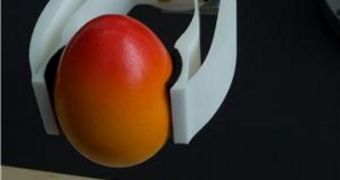Aeronautics researchers have for a long time tried to catch a glimpse of nature for inspiration, as they tried to produce more and more natural-looking wing designs, for improved flight. Birds, over the millions of years of evolution they had at their disposal, managed to reach a point where they are extremely well suited for flight. They are elegant in their maneuvers, which is more than what could be said about most of the airplanes in the world. But their elegance is owed to one simple trait, AlphaGalileo reports.
It is precisely this characteristic – the ability to modify the geometry of their wings as they fly – that experts are so keen on replicating and modifying. But all efforts of producing smart materials that would bend according to needs have thus far failed gloriously, simply because of the enormity of the challenge. In birds, countless sensors on their wings send impulses to their brains, alerting it on how the wind is blowing, and also on the position of the various segments of their wings. The cortex then automatically and instinctively modifies and corrects angles, so that the flight effort always remains as efficient and undemanding in energy as possible.
Researchers at the EMPA Mechanics for Modeling and Simulation Laboratory, led by expert Flavio Campanile, believe that materials to mimic this ability are not far away. They say that airplanes could in the near-future be made to move elegantly in the air, while at the same time reducing drag, and therefore pollution and costs associated with operating giant machines such as the Airbus A380. “Sooner or later it will be possible to make wings without ailerons, flaps and thousands of individual parts. They will have in principle only one component, which continually changes shape,” the team leader explains. The concept is called a biomimetic wing.
It basically refers to a wing that changes its own shape in accordance to the airflow around it, thus always maintaining the optimum balance between drag and lift. Such structures would also be light, which will additionally decrease an airplane's consumption and carbon footprint. The team developed so-called “compliant systems” in collaboration with colleagues from ETH Zurich, but the expert wants to go even further, and tackle concrete problems. “Wherever machines are at work, compliant structures can be used to bring improvements,” he believes. The group will continue to investigate the new materials it has had the chance to get a glimpse of, until viable, bendable, adaptive structures are produced for large-scale applications.

 14 DAY TRIAL //
14 DAY TRIAL //